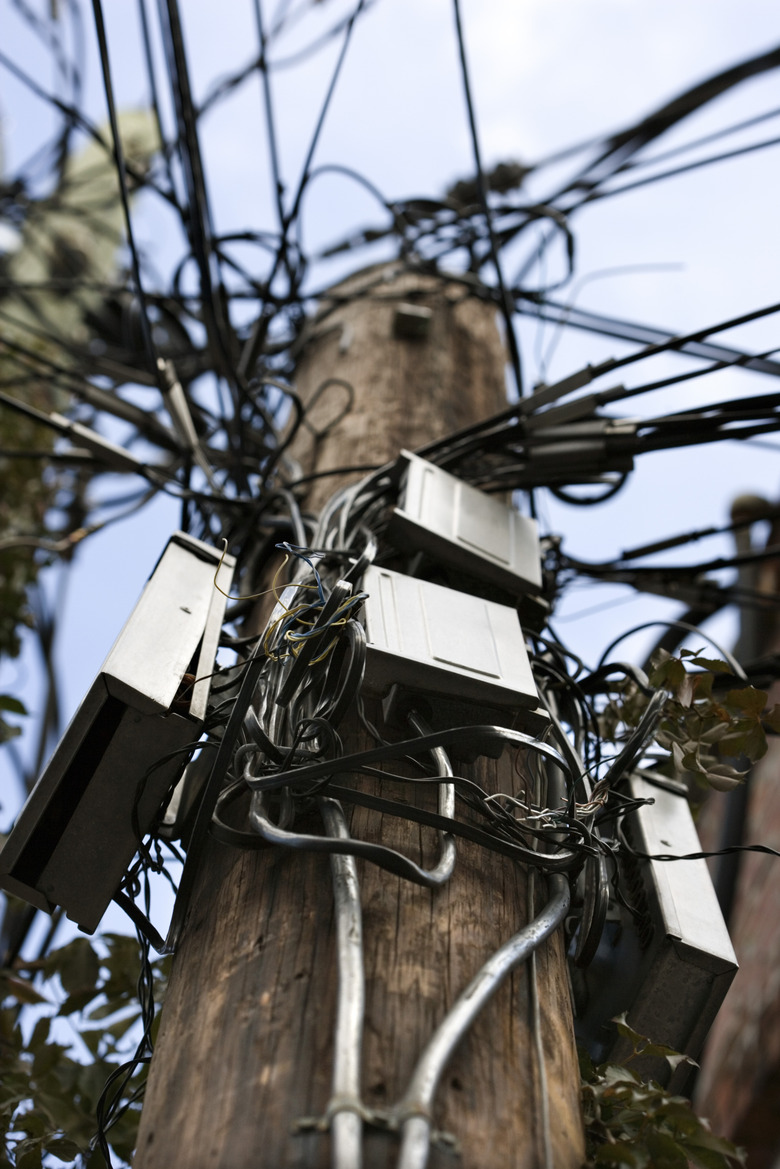What Would Cause Low Voltage In House Wiring?
Low voltage is a basic concept that refers to lower than normal levels of electric power entering buildings. Technically, the definition of "low voltage" is the diminution of electrical current to 90 percent of its normal capacity for a minute or more. The effects of this include poor appliance performance, dim lighting and intermittent outages. Just as serious is the possibility of overheating equipment and equipment simply malfunctioning because it is not getting the power it needs. (page 1, ref 3)
Overload
One of the most common causes of low voltage is the overload of the system. Different times of the day, such as early afternoon, are typically high demand times. As is well known, hot days and weeks of the summer can cause a surge of power demand for air conditioners, a very power hungry set of machines. When the power company detects a large surge in demand, it will engage in the standard 5 percent reduction in power per home in a region. This can be a cause for under- or weak voltage.
Distance
Less well known is the concept of distance. Utility Systems Technologies in New York issued a paper in September 2009 dealing with both the causes and solutions to low voltage issues. One of the claims made is that homes at a great distance from the main power plant or generator will receive a lower amount of voltage than homes that are closer. This is particularly the case in spread-out rural areas. The problem here is "low load density." This means that electricity must travel farther. In urban areas where people live close together, the increased density of "thickness" of the electrical signal is conducive to higher, or at least more regular, voltage per home.
Imbalance
Modern electrical systems for homes feature three wires coming from the transformer into the house. The purpose is to spread the load demand equally, with the third wire as a "neutral" regulator. Under some circumstances, the load might be uneven. Causes of this imbalance are many and include things as simply as weaker wiring for one wire than the other. When the load is unbalanced and more electricity is forced through one wire over the other, the "overworked" wire will begin to provide less voltage than the demand would indicate, causing weak signals and voltage.
Wires
The state of the wiring in an area is a common cause of voltage problems. Age and corrosion are a common cause of low voltage, as is dirty connections and poor insulation. Poor or damaged splicing work can also be a cause. In some cases, the wires used to carry electricity have a lower gauge than is necessary. If a city of 200,000 people is properly wired, a sudden increase in population will strain the system. Among other things, one problem is that the gauge of wire that was sufficient to supply 200,000 people will be too small to satisfy the demand of 400,000 people. Low voltage problems could be the result until the wires are replaced.
